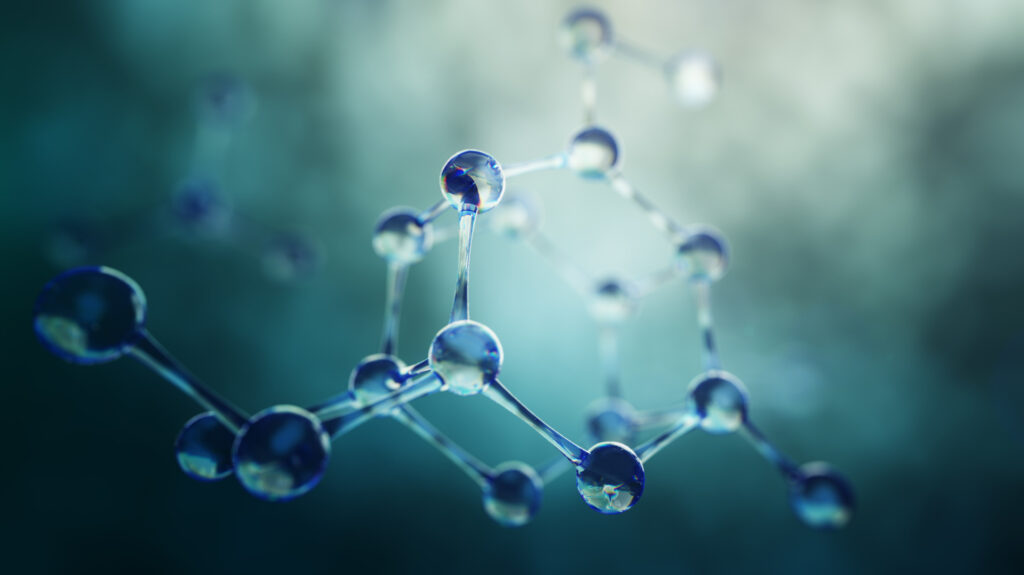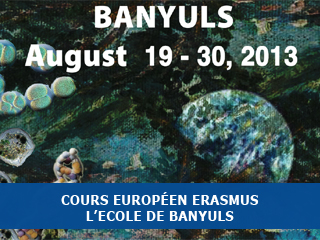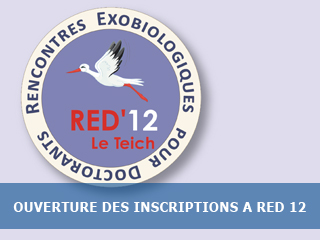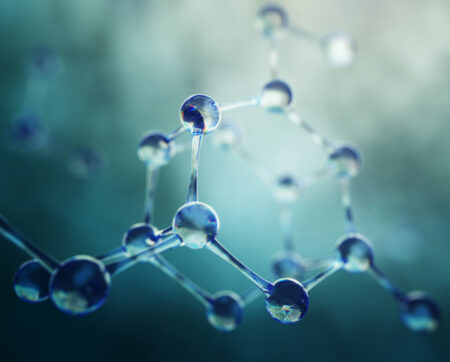Une série de cours d’astrobiologie sera donnée à partir du 6 Octobre 2005 sous forme de vidéoconférences. Des enseignants de cinq universités européennes traiteront des différents aspects de cette matière pluridisciplinaire. Ces cours seront donnés en anglais, et s’adressent à des étudiants de Master et Doctorat. Pour la France, ils auront lieu à l’université Paris 12, à Créteil.
Si vous voulez assister à ces cours, contactez : François Raulin ou Hervé Cottin.
Astrobiology Lecture Course network (ABC Net) To be held during the Winter Semester 2005/2006
Astrobiology is a newly emerging field of science. The scope of Astrobiology comprises the study of the overall pattern of chemical evolution of potential precursors of life, in the interstellar medium, and on the planets and small bodies of our solar system ; tracing the history of life on Earth back to its roots ; deciphering the environments of the planets in our solar system and of their satellites, throughout their history, with regard to their habitability ; and searching for other planetary systems in our Galaxy. Hereby, Astrobiology provides clues to the understanding of the origin, evolution and distribution of life and its interaction with the environment, here on Earth and in the universe.
Scientists from a wide variety of disciplines are gathering in the study of Astrobiology, including astronomy, planetary research, organic chemistry, palaeontology and the various sub disciplines of biology including microbial ecology and molecular biology. Space technology plays an important part by offering the opportunity for exploring our solar system, for collecting extraterrestrial samples, and for utilising the peculiar environment of space as a tool. However, this full expertise in Astrobiology is not always available at a single university.
To overcome this problem, experts from 5 different European universities covering the various fields of Astrobiology have agreed to gather in an Astrobiology Lecture Course Network with live tele-teaching between the different universities followed by an interactive question and answer period between students and teachers. This pilot study will be conducted in cooperation with the European Space Agency and its Erasmus Center which will operate the LiveNet broadcasting. The lectures will also be recorded and will be posted on the ESA website. Students, interested in Astrobiology, may subscribe to the Astrobiology Lecture Course Network. The course will provide 22 lecture hours which corresponds to 2 ects.
Each lecture starts at 15:00 (France time)
| Date | Lecturer | Place | Title |
|---|---|---|---|
| 06/10/05 | A. Brack | ESA/ESTEC | Astrobiology : From life on Earth to life in the Universe |
| 20/10/05 | H. Lehto | University of Turku | From Big Bang to the molecules of life |
| 03/11/05 | H. Cottin | University of Paris 12 | Basic prebiotic chemistry |
| 17/11/05 | K. Lehto | University of Turku | From molecular evolution to cellular life |
| 01/12/05 | H. Stan-Lotter | University of Dresden (tbc) | Extremophiles, the physico-chemical limits of life (growth and survival) |
| 15/12/05 | C. Cockell | OU, Milton Keynes | Habitability in our solar system and beyond |
| 12/01/06 | S. Fasoulas | University of Dresden | Astrodynamics and technology aspects of astrobiology missions in our solar system |
| 26/01/06 | M. Grady | OU, Milton Keynes | Astrobiology of terrestrial planets with emphasis on Mars |
| 09/02/06 | F. Raulin | University of Paris 12 | Astrobiology of the moons of the giant planets with emphasis on Titan and Europa |
| 23/02/06 | M. Sabbatini | ESA/ESTEC | Presentation of experiment facilities and instrumentation for space experiments in astrobiology |
| 09/03/06 | J. Vago | ESA/ESTEC | ESA involvement in astrobiology missions : Earth orbit and solar system exploration (present and future) |
| 23/03/06 | All | All | Examination |
| 06/04/06 | All | All | Examination (optional) |
ABC-Net Lecture plan Abstracts
| 06/10/05 | A. Brack | ESA/ESTEC | Astrobiology : From life on Earth to life in the Universe |
Abstract :
On Earth, life emerged in water about 4 billion years ago with
organised mo-lecular systems capable of self-reproduction and also
capable of evolution. It is gener-ally agreed that its main ingredients
were liquid water and organic molecules, i.e. skele-tons of carbon
atoms flanked by hydrogen, oxygen, nitrogen, sulfur and phosphorus
at-oms. Organic matter might have been formed in the primitive Earth’s
atmosphere or near hydrothermal vents. A large fraction of prebiotic
organic molecules might have been brought by extraterrestrial
meteoritic and cometary dust grains decelerated by the atmosphere. The
possibility that life might have evolved on early Mars, when water
ex-isted on the surface, marks it as a prime candidate in the search
for microbial life beyond the Earth. Europa has an icy carapace and
probably a subsurface region of water which might harbor a basic life
form. The atmosphere and surface components of Titan are also of
interest to exobiology forthe insight into a hydrocarbon-rich,
chemically evolving world. Furthermore, the detection of interstellar
organic molecules and the discovery of extrasolar planets broaden the
field of astrobiology to the whole Universe.
Brack, A. (1998) The molecular origins of life : assembling
pieces of the puzzle, Brack, A. ed., Cambridge University Press,
Cambridge.
Brack, A. (1999) Life in the Solar System, Adv. Space Res. 24, n° 4, 417-433.
Westall, F., Brack, A., Hofmann, B., Horneck, G., Kurat, G.,
Maxwell, J., Ori, G.G., Pillinger, C., Raulin, F., Thomas, N., Fitton,
B., Clancy, P., Prieur, D., Vassaux, D. (2000) An ESA study for the
search for life on Mars, Planet. Space Sci. 48, 181-202.
Brack, A. (2001) Life : origins and possible distribution in the
Universe, In Ency-clopedia Astron. Astrophys. ed. P. Murdin, IOP,
Bristol (2001) pp. 1411-1421.
Astrobiology. The Quest for the conditions of life. Eds. G. Horneck and C. Baumstark-Khan, Springer, Berlin (2001).
| 20/10/05 | H. Lehto | University of Turku | From Big Bang to the molecules of life |
Abstract :
Evolution of the universe predates both the chemical evolution and the
evolu-tion of life. We will summarise the origin of the critical
elements for life, the CHNOPS, and the initial formation of molecules.
From cosmological models we can understand the origin of hydrogen and
helium. Later hydrogen will be required when water is formed. Helium,
which appears quite useless for life, turns out to be a critical factor
in the synthesis of carbon leading to heavier elements. The second
compound of water, oxygen, is formed in the hot cores of stars. Once
these elements get from the stars back into the cool interstellar space
they begin forming interstellar clouds, where a vast spec-trum of
molecules is formed. The observed properties of these molecules, and
the larger dust particles will be reviewed. These will the play an
important role in the formation of planets in the accretion disks of a
metal rich population of stars. This material reproc-essed by the newly
formed star and other planets “rains” on the young planet in the form
of meteorites, comets and asteroids creating a supply of raw materials
needed for the prebiotic evolution and the eventual biological
evolution of life.
| 03/11/05 | H. Cottin | University of Paris 12 | Basic prebiotic chemistry |
Abstract : Before
reaching a sufficient complexity to fill the giant gap between
chemistry and biology, molecular structures have evolved from simple
molecules such as CH4, HCN, H2CO, towards key prebiotic compounds :
amino acids, puric and pyrimidic bases, sugars. Nowadays three kinds of
environments are considered to be the place in which the very first
steps of prebiotic chemistry took place : 1- Earth prebiotic atmosphere
(Stanley Miller’s experiment and its further devel-opments),
2- the bottom of oceans, near hydrothermal vents, and 3- space, in the
solar nebula and even the interstellar medium, before meteorites and
comets would seed Earth oceans with complex organic material. In this
lecture, we will discuss the relevance of these three hypotheses. Then,
from sim-ple considerations of organic chemistry, we will try to
understand the first chemical steps leading to the formation of amino
acids, puric and pyrimidic bases and sugars in prebiotic environments.
| 17/11/05 | K. Lehto | University of Turku | From molecular evolution to cellular life |
Abstract : Origin
of life, and the steps from molecular evolution to cellular life can be
studied from two different directions : they can either be modelled
from the chemical aspects, by studying the simple precursors of organic
molecules, or, the nucleotides, amino acids and fatty acids, and by
testing how these can assemble into more complex polymers.
Alternatively, it can be approached from the analysis of concurrent
cellular life, to see which components are the most ubiquitous and
conserved in all life forms, indicating that are the most original
functional units of life. Molecular analysis of these structures also
gives suggestions of how they have been involved in the early molecular
evolution, and what functions they may have provided to the early
(pre-cellular) repli-cons. In this lecture we start by viewing the most
conserved components of the present life forms, considered to be
relicts of the early RNA world. We will consider what features are
believed to have been established already in the last common ancestor
(LCA), and give some hypotheses of the nature of the LCA. We will go
backwards, step by step, to see what inventions had to precede each
stage of early evolution : genetically encoded proteins had to
pre-exist prior to the establishment of LCA, and RNA replicons, or
repli-cating RNA-analogues had to pre-date genetically encoded
proteins. RNA viruses will be presented as a model for the RNA-protein
world. Some central problems in the estab-lishment of the RNA world
will be discussed. Different hypotheses of the distinct condi-tions,
which may have hosted the early RNA world, will be presented.
| 01/12/05 | H. Stan-Lotter | University of Dresden (tbc) | Extremophiles, the physico-chemical limits of life (growth and survival) |
Abstract :
Extreme environments are characterized by physical and chemical
parameters which were considered lying outside the range which is
suitable for life. In recent years, the notion of what constitutes
life-limiting conditions in an environment has undergone dramatic
changes : microorganisms and occasionally higher organisms were
discovered, which not only tolerate, but thrive under ranges of
temperatures, pH values, pressures, salinity, ionizing radiation etc.
previously thought to destruct biomolecules and organ-isms. The
presence of liquid water is a prerequisite for growth, under all kinds
of condi-tions, but survival of resting stages, such as spores or
dormant forms, was shown to be possible under vacuum and in space for
several months. The detection of numerous types of viable prokaryotes
in subterranean locations, such as granite, ancient halite and
sediments, suggests the possibility of even more extensive longevity,
namely over geo-logical time periods, i.e. over millions of years.
The implications of these discoveries for the search for
extraterrestrial life are several-fold : the probability of finding at
least prokaryotic life in environments such as the sub-surface of Mars
or the salty ocean of the Jovain moon Europa appears greatly enhanced,
and the potential for panspermia is considered more plausible than ever
before.
| 15/12/05 | C. Cockell | OU, Milton Keynes | Habitability in our solar system and beyond |
What do we mean
by ’habitability’ ? The term means many different things depending on
the organisms that are considered and it defined by the chemical and
physical envelope for a given organism. As we currently have no direct
evidence for life on another planet, habitability is necessarily
constrained by our knowledge of life on Earth. We use our knowledge of
the extremes of life on Earth to assess extraterrestrial environments
and the plausibility that they can support life. I will discuss the use
and limitations of the concept of ’habitability’ and provide examples
of how we assess the habitability of other worlds using extreme
environments on Earth. The dangers of making biological assump-tions
that err on the side of optimism are rife in astrobiology and students
of this science must understand where ’habitability’ assessments
trangress from scientific assessments of other worlds into science
fiction. The formulation of a definition of ’habitability’ can greater
assist us in defining the possibilities for life elsewhere.
| 12/01/06 | S. Fasoulas | University of Dresden | Astrodynamics and technology aspects of astrobiology missions in our solar system |
Abstract : Content :
1. Launch
• scenarios, Δv, launch windows,
• Constraints for biological payloads
2. Interplanetary trajectories
• Transfer trajectories,
• space environment,
• constraints for biological payloads
3. (Re)Entry, Descent, Landing
• Entry in different atmospheres (CO2, CH4, …),
• problems to biological payloads
4. Mission subsystems
• Energy system,
• Thermal system,
• Communication, Data Handling & Transfer,
• Interaction to biological payloads
5. Return-to-Earth Missions
• possibilities,
• technical constraints to probes, …
Paragraph 1 to 5 shall be summarised for astrobiology missions to planets (Mars), aster-oids, comets and/or moons (Europa)
| 26/01/06 | M. Grady | OU, Milton Keynes | Astrobiology of terrestrial planets with em-phasis on Mars |
Abstract missing
| 09/02/06 | F. Raulin | University of Paris 12 | Astrobiology of the moons of the giant plan-ets with emphasis on Titan and Europa |
Abstract : By
extrapolating what we know on the chemical processes which gave rise to
the first living system on the Earth, any planetary body holding
organic matter and/or liquid water is of astrobiological interest.
Models of internal structure and some surface observations strongly
suggest that three of the four Jovian Galilean satellites, Gany-mede,
Callisto and Europa, and the largest satellite of Saturn, Titan,
include an internal ocean of liquid water. Organic matter is present on
Titan and should be present in the internal ocean of Europa. The
lecture will concentrate on these two later satellites which appear as
the most interesting bodies for astrobiology in the outer solar system.
Europa is often considered as the best target for searching for
extraterrestrial life (after Mars). Its still hypothetical water ocean
seems to be relatively close to its surface. The emergence of life on
this Galilean satellite can be considered, as well as the possibility
of bacterial importation. Moreover, it seems to be a potential harbour
for living systems. But direct search for (hypothetical) living systems
in the (still hypothetical) Europa sub-surface oceans are very
speculative and there study is technically difficult. In particular,
the problem of potential contamination during such a search for
Europa’s life is crucial. Indirect search from a detailed spectral
mapping of the surface from an orbiter is much easier and within the
current technical capabilities.
Titan presents three main astrobiological interests : i) its many
analogies with the Earth, ii) its complex organic chemistry and iii)
the possible presence of life. Indeed Titan is a place where a
prebiotic-like chemistry is occurring on a planetary scale, in an
atmosphere dominated by N2 with several % of CH4. This chemistry is
pre-sent in the different atmospheric phases (gas but also solid and
probably liquid, in the aerosols) and on the surface. But this
atmosphere and surface chemistry is evolving in the absence of
permanent liquid water bodies. Nevertheless, liquid water could be
pre-sent episodically on Titan surface. Furtheremore, it seems to be
present in the deep structure of the satellite under the form of
water-ammonia oceans. Thus, the emergence of life on Titan, although
not very likely, because of the low temperatures and energy fluxes,
cannot be ruled out. The Cassini-Huygens mission both from the Cassini
orbiter and the Huygens probe, is providing a fantastic amount of new
data of astrobiological importance for our under-standing of Titan. The
data obtained from Cassini through its first orbits at low altitude
already show the presence of cryo-volcanism on Titan’s surface and of
complex organic chemistry in the high atmospheric regions. The first
retrieving of the Huygens data pro-vides essential information on the
origin of Titan’s atmosphere and in particular of the atmospheric
methane. It also provides the first chemical analysis of Titan’s
aerosols, and the discovery of refractory organics in these particles.
Putting together these new and essential information with laboratory
data and theoretical modelling we are just starting to get a global and
comprehensive astrobiological vision of Titan.
| 23/02/06 | M. Sabbatini | ESA/ESTEC | Presentation of experiment facilities and in-strumentation for space experiments in astro-biology |
The lecture will
describe some of the scientific instrumentation used to date in ESA
mis-sions. Pressurised and exposed experiment facilities on the
International Space Station, FOTON capsules and MARS Express shall be
used as examples to describe the con-straints that instrument
developers have to face in developing hardware for space mis-sions.
| 09/03/06 | J. Vago | ESA/ESTEC | ESA involvement in astrobiology missions : Earth orbit and solar system exploration (pre-sent and future) |
In the framework of its Aurora Exploration Program, in 2011 the European Space Agency (ESA) plans to launch the ExoMars mission.
ExoMars’s
scientific objectives are : 1) To search for signs of past and present
life ; 2) To identify surface hazards to future human missions ; and 3)
To characterise, in the shallow subsurface, the vertical distribution
profile for water and geochemical composi-tion.
ExoMars will
deploy a high-mobility rover on the Martian surface, carrying a
com-prehensive suite of analytical instruments dedicated to exobiology,
geochemistry, and environmental research : the Pasteur payload. Over
its planned 6-month lifetime, the rover will travel a few tens of
kilometres searching for traces of past and present signs of life. It
will do this by collecting and analysing samples from within surface
rocks, and from underground -down to 2-m depth. The very powerful
combination of mobility with the capability to access locations where
organic molecules are well preserved is unique to this mission.
Provided an appropriate landing site can be targeted, ExoMars will have
the right tools to try to answer the question of whether life ever
arose on the red planet.
The ExoMars
mission contains two other elements : a Mars orbiter and a Descent
Module. The orbiter’s main task will be to act as data relay satellite,
although it will also carry an important scientific payload. The
Descent Module’s objective is to safely deliver to the Martian surface
the ExoMars Rover. The rover, whose mass is presently estimated at 220
kg, will carry the Pasteur scientific payload. The Pasteur Payload is
equipped with a multispectral, stereoscopic camera ; an electromagnetic
subsurface sounder to identify local water/ice deposits ; a drill
capable of reaching a depth of 2 m, and also of collecting specimens
from within surface rocks ; a sample preparation and distribution unit,
an optical microscope ; an oxidation sensor ; and a variety of
instru-ments for the characterisation of organic substances and
minerals.
Latitudinal bands
between -15º and 45º can be targeted for landing, ensuring that the
mission is flexible enough to accommodate interesting new sites based
on latest avail-able data from on-going Mars orbital missions. Over its
envisioned lifetime of 180 sols, the rover is designed to cover 10+ km
of ground track over typical Martian terrain. Op-erations beyond this
period will depend mainly on the amount of dust deposited on the
rover’s solar panels.






Aucun commentaire sur l'article ABC-Net : Cours Européens en Exo/Astrobiologie